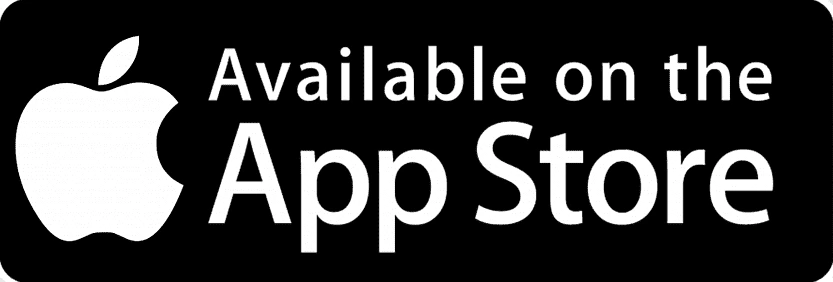Malnutrition remains one of the gravest public health challenges facing India. Despite steady economic growth and progress in several social sectors, India continues to house a large population of undernourished children and women. The Global Hunger Index and National Family Health Survey (NFHS) reports have repeatedly highlighted alarming statistics regarding child stunting, wasting, anemia, and undernutrition. To combat this, the Government of India launched the Poshan Abhiyaan, also known as the National Nutrition Mission, to ensure a malnutrition-free India.
Background and Rationale of Poshan Abhiyaan
India’s malnutrition indicators have historically been high despite various food security and health programs in place. According to NFHS-4 (2015-16) and NFHS-5 (2019-21):
- Over 35% of children under five years were stunted (low height for age).
- More than 19% were wasted (low weight for height).
- Around 32% were underweight (low weight for age).
- Over 50% of women aged 15–49 years were anaemic.
These figures reflect the urgent need for a comprehensive and targeted intervention. Malnutrition not only affects the physical and mental development of individuals but also impacts the economy by reducing productivity and increasing health care costs.
Launched on 8 March 2018, in Jhunjhunu, Rajasthan, Poshan Abhiyaan is a flagship program of the Ministry of Women and Child Development aimed at improving nutritional outcomes for children, adolescent girls, pregnant women, and lactating mothers. It seeks to reduce malnutrition, stunting, underweight prevalence, anemia, and low birth weight through a convergent and technology-driven approach.
Policy Objectives & Approach of Poshan Ahbiyaan:
| Objective | Target Rate of Reduction |
| Stunting and Under-nutrition | 2% per annum |
| Anemia | 3% per annum |
| Low Birth Weight | 2% per annum |
- Focuses on Social and Behavioural Change Communication (SBCC).
- Uses real-time monitoring through the Poshan Tracker app.
- Involves multi-ministerial convergence and community engagement.
- Promotes integration of AYUSH practices for holistic wellness.
- It also aims to create a Jan Andolan (people’s movement) to involve every citizen in the fight against malnutrition.
Key Features of Poshan Abhiyan
1. Convergence of Schemes
Poshan Abhiyan brings together several existing schemes, such as the Integrated Child Development Services (ICDS), Pradhan Mantri Matru Vandana Yojana (PMMVY), National Health Mission (NHM), Swachh Bharat Abhiyan, and others. This integrated approach helps reduce duplication and ensures coordinated service delivery.
2. Jan Andolan (People’s Movement)
The mission envisions mass participation to create awareness about good nutrition practices. Therefore, it encourages the involvement of panchayats, self-help groups (SHGs), schoolteachers, frontline health workers (ASHA, ANMs), and the general public.
3. Technology-Driven Monitoring
Poshan Abhiyan uses ICDS-CAS (Common Application Software) on mobile phones and tablets provided to Anganwadi workers. This helps track individual beneficiaries, monitor service delivery, and capture real-time data, thus improving accountability and transparency.
4. Behavioral Change Communication (BCC)
Above all, the program emphasizes educating people about proper dietary practices, hygiene, breastfeeding, complementary feeding, and the importance of health check-ups. So, behavior change campaigns are run using local languages, folk media, radio, and digital platforms.
5. Focus on the First 1000 Days
This refers to the period from conception to a child’s second birthday. Scientific evidence shows that proper nutrition during this window is critical for physical and cognitive development. Therefore, Poshan Abhiyan promotes prenatal care, institutional delivery, exclusive breastfeeding, timely immunization, and appropriate complementary feeding.
6. Community-Based Events (CBEs)
Regular events like Poshan Maah (September) and Poshan Pakhwada (April) are organized to engage communities and spread awareness through rallies, cooking competitions, health camps, and workshops.
Impact & Achievements:
| Indicator | NFHS-4 (2015–16) | NFHS-5 (2019–21) |
| Stunting | 38.4% | 35.5% |
| Wasting | 21.0% | 19.3% |
| Underweight | 35.8% | 32.1% |
- Since the launch of POSHAN Abhiyaan in 2018, over 90 crore Jan Andolan activities have been conducted.
- Improved convergence between ministries.
- Promoting diet diversity and millets (aligned with International Year of Millets 2023).
- Stronger focus on Maternal Health and Child Development.
Mission Saksham Anganwadi and Poshan 2.0: Also called Mission Poshan 2.0, this aims to improve health, nutrition, and immunity among women and children. It also focuses on upgrading Anganwadi Centres (AWCs) by providing dedicated buildings, clean toilets, and safe drinking water to create a better and healthier environment.
Components under Poshan 2.0:
- Supplementary Nutrition Programme (SNP):
- Targeted at children (6 months–6 years), PWLM, and AGs (14–18 years) in Aspirational Districts and NER.
- Targeted at children (6 months–6 years), PWLM, and AGs (14–18 years) in Aspirational Districts and NER.
- Early Childhood Care & Education (ECCE):
- Includes early stimulation for infants (0–3 years) and pre-school education (3–6 years).
- Includes early stimulation for infants (0–3 years) and pre-school education (3–6 years).
- Maternal and Infant Nutrition:
- Focus on Infant and Young Child Feeding (IYCF) practices.
- Focus on Infant and Young Child Feeding (IYCF) practices.
- AYUSH Integration:
- Incorporates traditional health systems for immunity and wellness.
- Incorporates traditional health systems for immunity and wellness.
- Poshan Tracker:
- Centralised digital system for real-time service delivery and monitoring.
- Centralised digital system for real-time service delivery and monitoring.
Initiatives | Poshan Abhiyaan:
- Poshan Maah: Since 2018, September has been celebrated as POSHAN Maah to improve the nutrition and health of children, teenage girls, pregnant women, and mothers who are breastfeeding. During this month, different activities are done to focus on important topics like care during pregnancy, proper breastfeeding, preventing anemia, checking children’s growth, encouraging girls to stay in school, talking about the right age to get married, keeping clean and healthy, and eating better food through food fortification.
- Poshan Vatika: Poshan Vatika is a small garden where families grow organic fruits and vegetables. It helps ensure a regular supply of healthy food, especially for women and children, and also keeps the soil healthy and fertile.
Community GIS is a digital platform that helps people use maps and location-based data to solve real-life problems. It includes an easy-to-use front end and a backend called Geonode. In addition, the main aim is to teach people how to use map data for planning and better decision-making. It supports users like data collectors and analysts in collecting, sharing, and understanding data.
The platform is open-source, so anyone can use or copy it without permission from MakerGHAT. Data comes from sources like the Census of India and the GISE Lab at IIT Bombay. Volunteers manage the website, and the idea is inspired by concepts like p2p governance and Dr. Raghuram Rajan’s Third Pillar.
- Poshan Abhiyaan Jan Andolan: It is a national campaign started by the Government of India in 2023 to spread awareness about the importance of good nutrition and to encourage healthy eating habits among all people. The theme of the campaign is “Nutrition for All: Together Towards a Healthy India.”
Further, the campaign includes activities like:
- Public awareness programs using TV, radio, social media, and community events.
- Nutrition education in schools and communities.
- Better access to healthy food for groups like pregnant women, breastfeeding mothers, children under 6, and teenage girls.
This campaign is a big step toward fighting malnutrition in India as well as aims to make the whole country healthier through better nutrition.
Importance:
- Tackles India’s triple burden of malnutrition—undernutrition, micronutrient deficiency, and obesity.
- Further, promotes intergenerational health and economic productivity by investing in early childhood development.
- Fosters community ownership and thus empowers women through nutritional awareness.
- Moreover, it aligns with Sustainable Development Goals (SDG-2 & SDG-3) related to zero hunger and good health and well-being.
Poshan Abhiyaan vs Poshan 2.0: Key Differences
| Feature | Poshan Abhiyaan (2018) | Poshan 2.0 (2022) |
| Launch Date | 2018 | 2022 |
| Key Focus Areas | Stunting, wasting, and underweight prevalence | Maternal nutrition, infant and young child feeding norms, treatment of SAM/MAM, wellness through AYUSH |
| Pillars | 4: Convergence, Capacity Building, Jan Andolan, Technology | 5: ICDS-CAS, Convergence Action Planning, Capacity Building of ICDS Officials, Jan Andolan, Innovations & Grievance Redressal |
| Key Interventions | Anganwadi services, nutrition supplementation, behaviour change communication | Anganwadi services, nutrition supplementation, behaviour change communication, diet diversity, food fortification, leveraging traditional knowledge, use of millets |
| Target Beneficiaries | Pregnant women, lactating mothers, children under 6 years old | Pregnant women, lactating mothers, children under 6 years old, adolescent girls |
| Budget | ₹9,746 crore (2018–2022) | ₹12,000 crore (2022–2027) |
| Expected Outcomes | Reduction in stunting, wasting, and underweight prevalence | Reduction in stunting, wasting, underweight prevalence; improved maternal nutrition; better infant & child feeding; reduced SAM/MAM incidence |
Conclusion:
Poshan Abhiyaan is more than just a nutrition scheme; it is a transformative policy initiative shaping the future of public health in India. Through community involvement, technology integration, and policy convergence, it is paving the way toward a malnutrition-free India. However, sustained efforts, robust monitoring, and local-level innovations remain key to achieving its full potential.
References:
https://pib.gov.in/PressReleasePage.aspx?PRID=2109222
Also Read













